J. Frederic Loisel
Art collecting frequently requires gumshoe work, following up leads on artworks and their makers. Often as not, they end in disappointment. I first discovered the lithographs of French Print-Maker J. Frederic Loisel a few years back, hidden among prints by more famous artists like Marc Chagall and Maurice Denis in a portfolio of contemporary religious pieces in a Rue de Seine gallery on the Left Bank in Paris. I was immediately drawn to Loisel's expressive figures with their simplified facial features and elongated hands, so suggestive of El Greco, the early Picasso, or the later biblical prints of Otto Dix.
The elderly proprietor of the Paris gallery told me he had acquired the Loisel prints in the 1960s. He had a vague recollection of meeting the artist but knew nothing of his present whereabouts. He thought Loisel might, now, be in his seventies or eighties. Subsequent research has turned up tantalizing clues about the artistic company Loisel might have kept but very little about the artist, himself. Perhaps, one day, I’ll learn more about him and the reasons he made his evocative sacred images. Until then, Loisel's art will have to stand in for him.
Loisel, certainly, learned his trade from one of the best contemporary French printmakers: Edmond Desjobert. L'Atelier Desjobert was famed as a gathering place in 1920s Paris for American expatriot printmakers like Stuart Davis and Benton Spruance who were eager to learn Desjobert's stone block printing techniques. The master lithographer also counted Picasso, Matisse and Chagall among his clients. Loisel produced, Vie de la Vierge, a suite of 12 lithographs devoted to the life of the Virgin Mary, at the Desjobert print studio in 1949. These richly toned, chiaroscuro images showcase his skill in sketching with grease pencil on stone. In prints like The Flight into Egypt, he deftly creates a sense of the transcendent with scrawled, white-line effects.
Loisel created a second hagiographic suite of lithographs on the life of Saint Francis of Assisi, dated 1961. Judging from the prints in the Sacred Art Collection, the series must have numbered, at least, ten plates, since Plate IX depicts the aging and infirm saint, giving final instructions to his disciples. An unnumbered plate in my collection in a different format shows the dying Francis lying naked on the ground. In other prints from the series, St. Francis encounters the leper (Plate III), renounces all his worldly goods (Plate IV), and gives his blessing to St. Clare (Plate VI). Missing plates may show St. Francis receiving the stigmata or preaching to the birds. There is a visually satisfying unity in this gritty, lithographic cycle, which enhances the story of God’s Little Juggler in ways good sacred narrative art should.
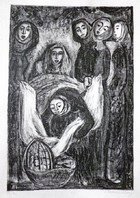
The Birth of the Virgin
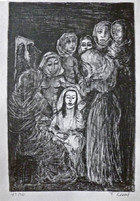
The Education of the Virgin
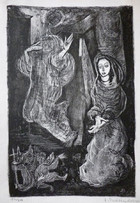
The Annunciation
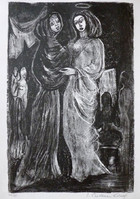
The Visitation
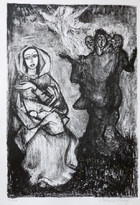
The Birth of Christ
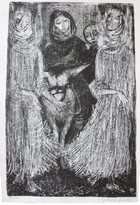
The Flight into Egypt

The Christ Child Among the Elders in the Temple

The Wedding at Cana
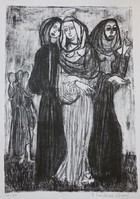
The Virgin Takes Leave of her Son
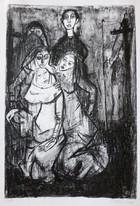
The Crucifixion
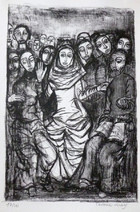
Pentecost
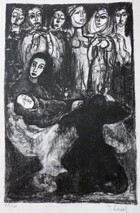
The Dormition of the Virgin
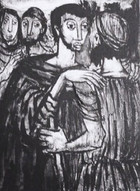
The Life of Saint Francis (Plate III)
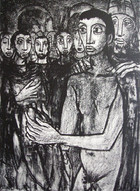
Plate IV
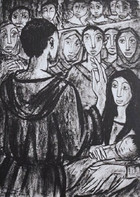
Plate V
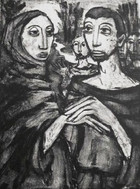
Plate VI
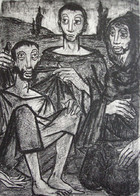
Plate VII
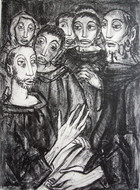
Plate IX

